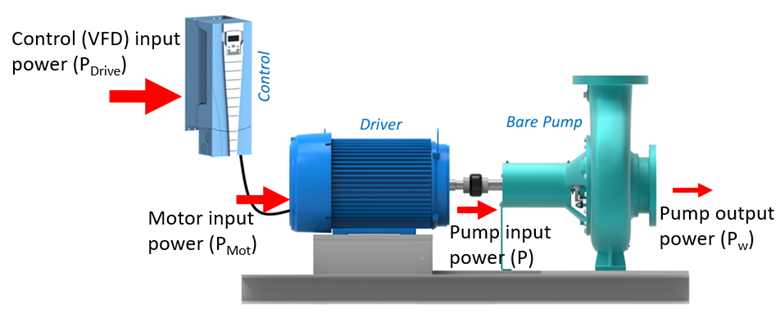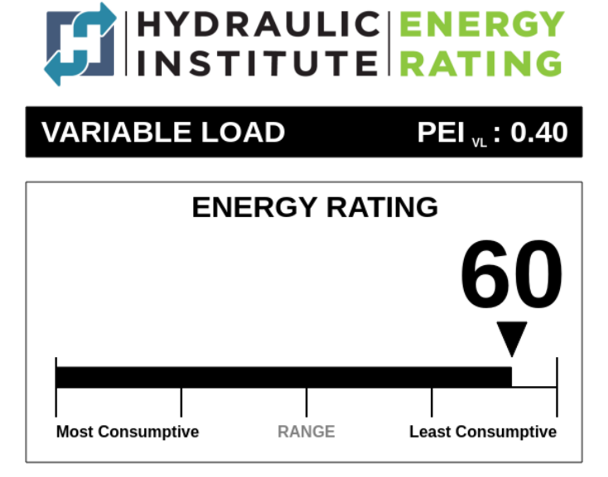Pump Savings Calculator – Updated Version Released and How to Calculate Energy
The Pump Savings Calculator, version 1.0.2, was recently released, which is inclusive of the most up to date energy costs released by the Energy Information Agency.
Category: PSM Newsletter, Blogs, Energy Efficiency December 12, 2023
The Pump Savings Calculator, version 1.0.2, was recently released, which is inclusive of the most up to date energy costs released by the Energy Information Agency. The Pump Savings Calculator is a free tool that leverages the Hydraulic Institute’s (HI) Energy Rating Database and Label, allowing the user to calculate energy and total life cycle cost savings for water pumps without doing detailed calculations.
So how does it work? It all starts with the fundamentals of how pumps consume energy, which can be involved considering all the variables.
Presented in the equation below, power consumption depends on the pump’s flow rate (gallons per minute, gpm) and total head (feet, ft), and the overall efficiency of the pump, motor and variable frequency drive (VFD) expressed as a decimal. Specific gravity is the relative density of the liquid and is 1.0 for water at ambient temperature. Lastly, 5308 is a constant to convert to kW. Electrical input power in kilowatts (kW) can therefore be reduced if the system head and/or flow rate are decreased, or if the overall efficiency of the system is increased.

In Image 1 the red arrow represents the power at each point in the equipment string (VFD, Motor, Bare Pump and Output to System). The largest red arrow (VFD input power) is calculated with equation 1. The size of the red arrow decreases following each piece of equipment with the pump output power (Pw) being the smallest red arrow, representing the efficiency loss from the electrical input to the hydraulic power delivered to the system (overall efficiency). Once power in kW is known it is multiplied by operating hours to give energy usage in kilowatt-hours (kWh).

The preceding description illustrates that it can be involved to calculate the actual energy usage of a pumping system. Specifically, the pump efficiency varies significantly depending on the operating flow rate, and most systems operate at variable flows and pressures. This is where the HI Energy Rating and Pump Savings Calculator simplifies the process by providing a standardized calculator that offers default operating load profiles, operating hours, and even provides the energy cost for each state. The basis of the simplified method is standardized testing of pumps to determine the Energy Rating, and subsequent research done as part of US DOE Regulations and by the Northwest Power Council in support of utility incentive programs. The result is reliable savings estimates when considered across the population of pumps within the various water applications researched and available in the pump savings calculator.
Image 2 shows the Energy Rating portion of the HI Energy Rating label, which is a 60 for this variable load (variable speed) pump label. The Energy Rating of 60 communicates that it consumes 60% less power than a minimally compliant pump, which is substantial and typical of variable pumps. The Pump Savings Calculator utilizes the Energy Rating and average operating hours for commercial and industrial water applications to estimate the energy cost savings between similar new pumps or when replacing an existing pump.
Download the Pump Savings Calculator HERE and watch a short video HERE to learn how to use the calculator and its functionality.

SUBSCRIBE TODAY
Get the latest pump industry news, insights, and analysis delivered to your inbox.
